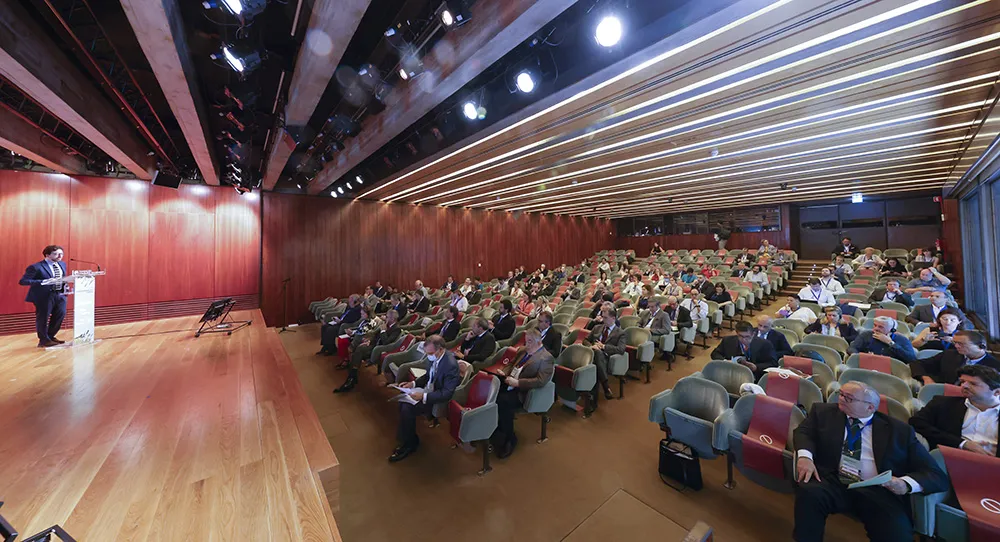Within the framework of the completion of the internal market, the Member States of the European Union approved the Construction Products Regulation in 2011
Its objective is clear and simple: break down barriers in the field of construction products and create a uniform system of certification that is based on mutual recognition.
June 8, 2015
Read time: 4 mins
Within the framework of the completion of the internal market, the Member States of the European Union approved the Construction Products Regulation in 2011
Its objective is clear and simple: break down barriers in the field of construction products and create a uniform system of certification that is based on mutual recognition.
This would allow companies on the one hand to market their products across the EU with any additional barriers to trade. On the other hand it would allow authorities to enjoy greater choice when procuring construction products.
It goes without saying that this would go hand in hand with a high level of product performance that would also benefit European citizens.
A manufacturer’s passport to the markets of the EU is, in principle, guaranteed by what is commonly referred to as the CE certificate, for example, a document that is issued by a notified body and which states the performance of the product.
Based on the principal of mutual recognition, a CE certificate issued by a notified body in one country is automatically recognised by all others. As such it is eligible for tenders in all EU member states. In this sense, notified bodies act as passport issuers and play a crucial role in safeguarding the integrity of the system.
Unfortunately, the opening of the market has proved to be a mixed blessing for the sector of vehicle restraint systems. While allowing some additional possibilities for companies operating on a pan-European basis and greater choice for authorities, the internal market for vehicle restraint systems is beginning to suffer market distortions that are gradually eroding confidence in the system. The reason: certain notified bodies are not playing by the rules.
Over the past three years, ERF and its members unfortunately have come across numerous practices by certain notified bodies which are not in accordance the provision of law, distort the internal market for vehicle restraint systems and can conceivably put road users at risk.
It is for this reason that the ERF, through its latest position paper, has decided to launch an urgent appeal to authorities to seriously consider the problematic functioning of notified bodies for the hEN 1317-5 for vehicle restraint systems and to take measures for improving the situation.
“We are seeing more and more of these cases, which is why we decided as a group to react and publish this position paper. It outlines a series of incorrect practices and proposes a series of measures to improve the unsatisfactory status quo,” explains Konstandinos Diamandouros, head of office at the2866 European Union Road Federation and responsible for vehicle restraint systems.
“While it is understandable that some mistakes occur when assessing the performance of products, what we are seeing today in the market cannot be explained by simple error,” explains Jeanne Forêt, chairperson of the ERF Working Group on Road Restraint Systems. “Most recently, we have even come across CE certificates, which have been issued by notified bodies that are not even notified to the hEN1317-5, a practice which is 100% illegal and cannot be a simple error.” The next steps of the working group will be to raise awareness of the problems encountered in the market and take targeted steps for improving the situation. Among others, this will consist of elaborating informational brochures which can assist road authorities in determining whether a certificate is genuine or not and proposing dedicated information sessions to interested parties.
“We are ready to take the necessary steps to contribute from our side to improve the way notified bodies currently function,” said Diamandouros. “Nevertheless, it is essential that road authorities, national surveillance authorities and the European Commission clearly acknowledge the nature of the problem and start proposing tangible solutions.”
The ERF Position Paper is available in English, French, Italian, Polish and German.
Contact person: Konstandinos Diamandouros, %$Linker:2 Email <?xml version="1.0" encoding="utf-16"?><dictionary /> 0 0 0 oLinkEmail [email protected] email [email protected] false mailto:[email protected] true false %> / +32-2-6445877
Its objective is clear and simple: break down barriers in the field of construction products and create a uniform system of certification that is based on mutual recognition.
This would allow companies on the one hand to market their products across the EU with any additional barriers to trade. On the other hand it would allow authorities to enjoy greater choice when procuring construction products.
It goes without saying that this would go hand in hand with a high level of product performance that would also benefit European citizens.
A manufacturer’s passport to the markets of the EU is, in principle, guaranteed by what is commonly referred to as the CE certificate, for example, a document that is issued by a notified body and which states the performance of the product.
Based on the principal of mutual recognition, a CE certificate issued by a notified body in one country is automatically recognised by all others. As such it is eligible for tenders in all EU member states. In this sense, notified bodies act as passport issuers and play a crucial role in safeguarding the integrity of the system.
Unfortunately, the opening of the market has proved to be a mixed blessing for the sector of vehicle restraint systems. While allowing some additional possibilities for companies operating on a pan-European basis and greater choice for authorities, the internal market for vehicle restraint systems is beginning to suffer market distortions that are gradually eroding confidence in the system. The reason: certain notified bodies are not playing by the rules.
Over the past three years, ERF and its members unfortunately have come across numerous practices by certain notified bodies which are not in accordance the provision of law, distort the internal market for vehicle restraint systems and can conceivably put road users at risk.
It is for this reason that the ERF, through its latest position paper, has decided to launch an urgent appeal to authorities to seriously consider the problematic functioning of notified bodies for the hEN 1317-5 for vehicle restraint systems and to take measures for improving the situation.
“We are seeing more and more of these cases, which is why we decided as a group to react and publish this position paper. It outlines a series of incorrect practices and proposes a series of measures to improve the unsatisfactory status quo,” explains Konstandinos Diamandouros, head of office at the
“While it is understandable that some mistakes occur when assessing the performance of products, what we are seeing today in the market cannot be explained by simple error,” explains Jeanne Forêt, chairperson of the ERF Working Group on Road Restraint Systems. “Most recently, we have even come across CE certificates, which have been issued by notified bodies that are not even notified to the hEN1317-5, a practice which is 100% illegal and cannot be a simple error.” The next steps of the working group will be to raise awareness of the problems encountered in the market and take targeted steps for improving the situation. Among others, this will consist of elaborating informational brochures which can assist road authorities in determining whether a certificate is genuine or not and proposing dedicated information sessions to interested parties.
“We are ready to take the necessary steps to contribute from our side to improve the way notified bodies currently function,” said Diamandouros. “Nevertheless, it is essential that road authorities, national surveillance authorities and the European Commission clearly acknowledge the nature of the problem and start proposing tangible solutions.”
The ERF Position Paper is available in English, French, Italian, Polish and German.
Contact person: Konstandinos Diamandouros, %$Linker:








